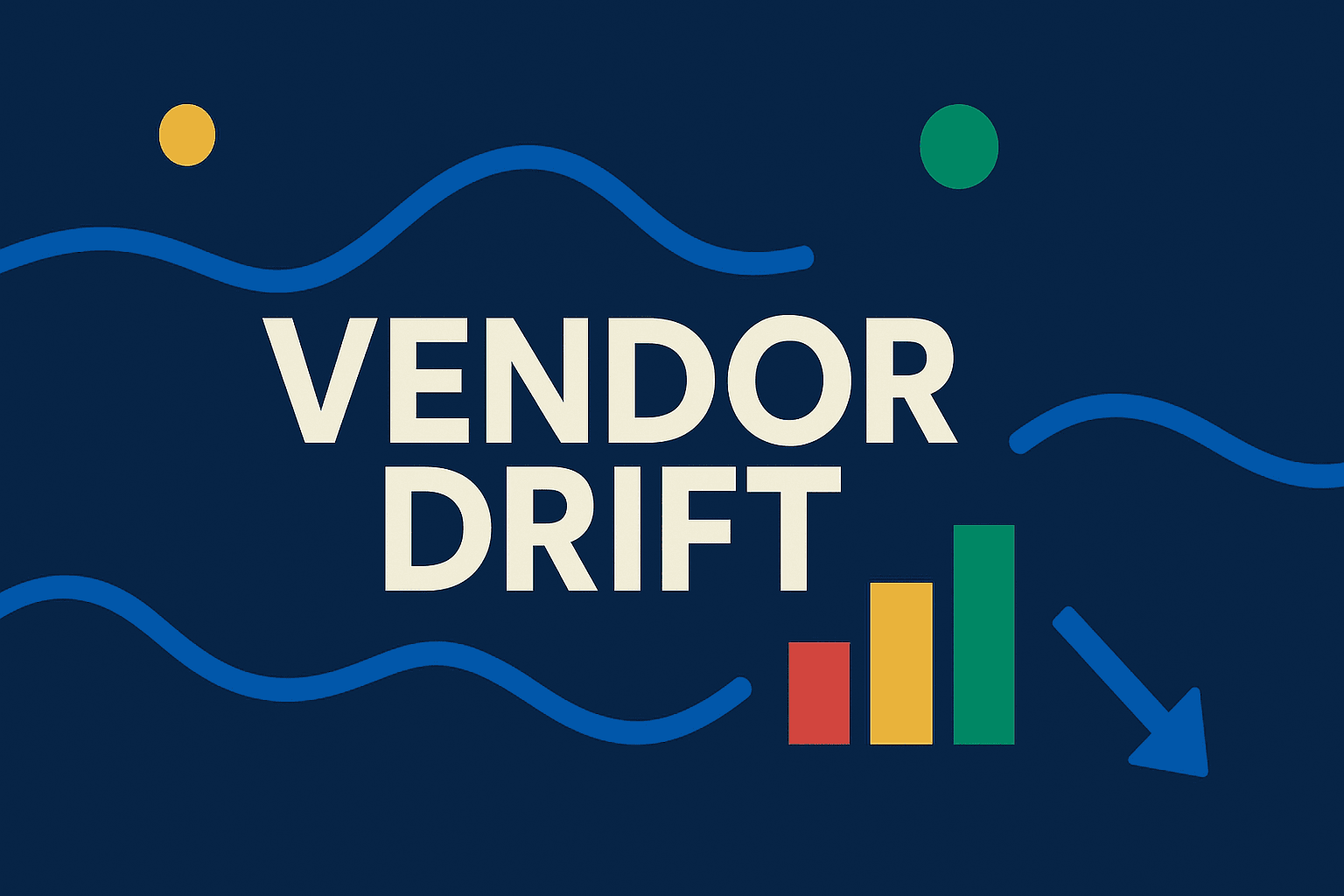29 märts

You’ve onboarded the vendor.
Verified the certifications.
Finalized the paperwork.
Everything seems solid—on day one.
But here’s the part that often goes unnoticed:
What happens six months later? Or a year?
Vendors evolve.
Teams get restructured.
Security budgets change.
New technologies get introduced.
Controls that were once enforced quietly fade away.
And unless you’re actively looking for those signals, they’re easy to miss.
That slow, gradual change is what I call Vendor Drift.
It’s not about sounding the alarm—it’s about the kind of risk that quietly builds up in the background. Many security programs don’t catch it early enough, simply because their monitoring process ends after onboarding.
This post covers a few ideas to implement in your vendor management to stay ahead:
- What Vendor Drift really looks like
- Real-world signals worth keeping an eye on
- Tactics to increase visibility—without adding busywork
If you’re already thinking about how to improve vendor oversight after onboarding, this is for you.
5 Signs That Vendor Drift Has Started
You don’t need to track every little thing your vendors do.
But you do need to notice when something important changes.
Here are five practical signs that something might be slipping—and what you can do to stay ahead.
1. Certifications Quietly Expire
You onboarded them with a shiny SOC 2 report.
That was 18 months ago.
If no one’s keeping track, it’s surprisingly easy to miss expired certifications—and the risk that comes with them.
What to do:
- Record expiration dates during onboarding and set reminders to check them as the date approaches.
- Follow up if recertification doesn’t show up when expected.
- It’s not about catching them off guard—it’s about making sure key controls don’t quietly fall off the radar.
2. Leadership or Ownership Changes
New CTO? Acquired by a private equity firm?
That’s a different company from the one you vetted last year.
Security priorities often shift when leadership changes.
And unless someone flags it, the risk profile stays outdated.
What to do:
- Set up Google Alerts with the vendor’s name and keywords like “acquisition” or “new CEO.”
- Use these alerts as a prompt to check in and reassess your assumptions.
3. Breach Reports and Threat Intelligence
Don’t wait for the vendor to tell you if something went wrong.
By the time they do, it might already be a headline.
What to do:
- Use tools that spot leaked credentials or known vulnerabilities.
- Follow reliable security news feeds (e.g., Censys, Recorded Future).
- Every so often, search for the vendor’s name plus “breach”—it only takes a few seconds.
4. Product or Infrastructure Changes
A sudden move to the cloud or a new AI feature might look like progress.
But new tech usually means new risks—and the existing controls might not be enough.
What to do:
- Keep an eye on vendor release notes and changelogs.
- Bring up changes during your regular check-ins.
- See if you need to adjust any controls on your end.
5. Subtle Control Failures
Security controls don’t always break dramatically.
Sometimes they just fade away without anyone noticing.
The logs don’t get reviewed.
Incident response drills get skipped.
Backups go missing—and no one realizes.
What to do:
- Ask vendors to share basic summaries of security events or SLA performance.
- Watch for repeated delays, missed updates, or unusual downtime.
- If something feels off, look into it further.
These steps aren’t heavy-lift.
They’re just quick checks that keep you on top of slow drift.
Ready to connect the dots and make this part of your regular process?
Moving from Static Reviews to Continuous Monitoring
Most vendor risk programs rely on periodic reviews—typically once a year, sometimes quarterly.
That’s a good starting point. But when vendor environments change quickly, those static reviews leave too much room for drift.
You don’t need to reinvent your vendor management process to improve visibility.
Small, strategic signals can help you spot issues early—before they escalate into an audit finding or a security incident.
Adapt Risk Levels as New Signals Come In
If you’re already tracking vendor risk, consider making that score dynamic.
- A missed certification renewal? Lower the confidence level.
- Evidence of proactive security updates? Raise it.
- A flexible risk score gives you a clearer picture over time—without having to start from scratch with every review.
Link Risks to Real Controls—Not Just Frameworks
Vendor risks often map to frameworks like SOC 2 or ISO 27001.
But those frameworks don’t always match your specific needs.
Whenever possible, as part of your risk management, tie each risk to a concrete, observable control.
- If a vendor handles sensitive customer data, link that risk to their encryption practices—not just their compliance status.
- If they’ve introduced AI, make sure they’re securing the models and data flows.
This makes it easier to know what to follow up on when something changes.
Involve the Right People When Changes Happen
You don’t need to handle everything yourself.
Often, the best context comes from people already working with the vendor—procurement, legal, IT, or the business unit using the service.
When a trigger event comes up (like a leadership change or breach report), make it easy to flag it for a quick internal review.
A short Slack message or email thread can go a long way.
How Kordon Helps You Stay Ahead of Vendor Drift
If you’re looking to stay ahead of Vendor Drift without drowning in manual tasks, you don’t need more checklists—you need better visibility into what’s already changing.
Here’s how Kordon helps:
- Track Certification Expirations: Log expiration dates—like ISO 27001 or SOC 2—right in the vendor profile. Kordon will remind you when it’s time to check.
- Link Risks to Real Controls: Map risks to specific security controls—not just compliance frameworks. If something changes—like a cloud migration—you’ll know exactly which risk needs another look.
- Keep Everyone in the Loop: Assign both a business owner and a security manager to each vendor. That way, when an issue pops up, the right people know what to do.
- Centralize Your Vendor Data: All activities—notes, risk updates, file uploads, control management—stay organized within the vendor profile. No need to start from scratch when team members change.
Stay Ahead of the Drift
Vendor Drift doesn’t happen overnight.
It builds gradually—quiet changes in people, systems, and priorities that slowly erode your original risk assessment.
The goal isn’t to create more work for yourself.
It’s to build just enough awareness so you can catch changes early—while they’re still manageable.
Start by identifying a few key signals.
Loop in the right people.
Use tools that make tracking easy.
And if you’re using Kordon, you’ve already got a structure that supports this approach—without needing to reinvent your process.
Because vendor risk doesn’t end at onboarding.
And neither should your visibility.

